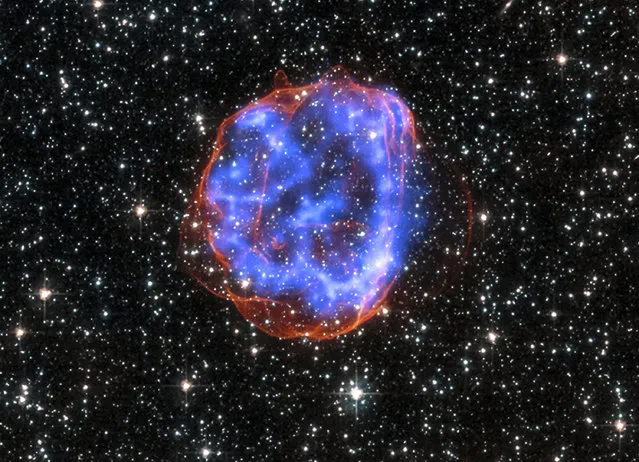
An expanding shell of debris called SNR 0519-69.0 is left behind after a massive star exploded in the Large Magellanic Cloud, a satellite galaxy to the Milky Way. Multimillion degree gas is seen in X-rays from Chandra, in blue. The outer edge of the explosion (red) and stars in the field of view are seen in visible light from the Hubble Space Telescope. Image released January 23, 2015. (Photo by Reuters/NASA/CXC/SAO)

A small section of the expanding remains of the Veil Nebula, a massive star that exploded about 8,000 years ago. The entire nebula is 110 light-years across, covering six full moons on the sky as seen from Earth, and resides about 2,100 light-years away in the constellation Cygnus, the Swan. Image taken by NASA's Hubble Space Telescope. Released September 24, 2015. (Photo by Reuters/NASA/ESA/Hubble Heritage Team)

The dancing lights of the aurora borealis as the sun emerges from behind the earth in a photo taken by astronaut Scott Kelly from the International Space Station on August 15, 2015. (Photo by Scott Kelly/Reuters/NASA)
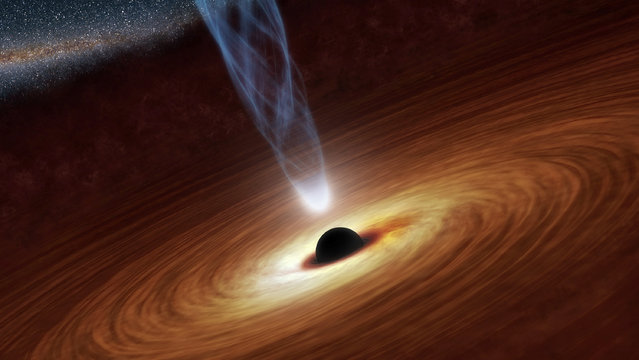
A supermassive black hole with millions to billions times the mass of our sun is seen in a NASA artist's concept illustration. In this image, the supermassive black hole at the center is surrounded by matter flowing onto the black hole in what is termed an accretion disk. This disk forms as the dust and gas in the galaxy falls onto the hole, attracted by its gravity. Also shown is an outflowing jet of energetic particles, believed to be powered by the black hole's spin. (Photo by Reuters/NASA/JPL-Caltech)
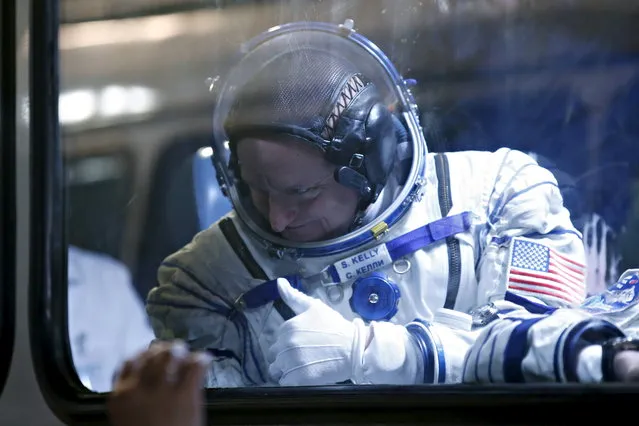
NASA astronaut Scott Kelly of the U.S. gestures after donning space suits at the Baikonur cosmodrome, March 27, 2015. (Photo by Maxim Zmeyev/Reuters)
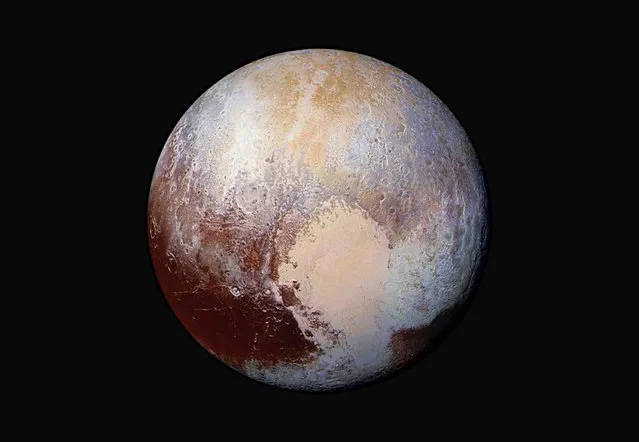
A NASA photo of Pluto made from four images from New Horizons' Long Range Reconnaissance Imager (LORRI) combined with color data from the Ralph instrument in this enhanced color global view released on July 24, 2015. (Photo by Reuters/NASA/JHUAPL/SwRI)
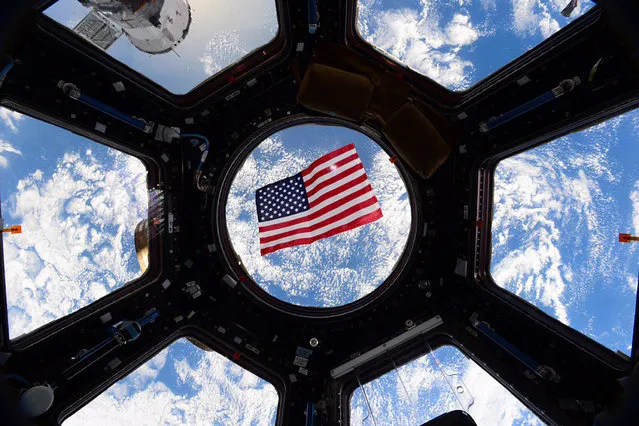
An American flag is framed in the windows of the International Space Station. Photo taken by astronaut Kjell Lindgren and released November 11, 2015. (Photo by Kjell Lindgren/Reuters/NASA)
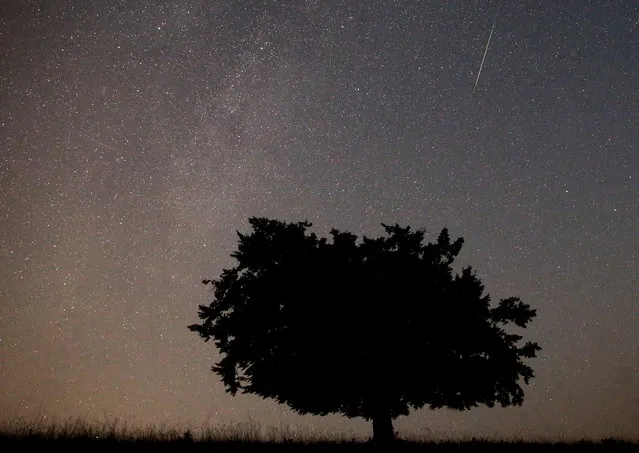
A meteor streaks across the sky during the Perseid meteor shower near Kraljevine on mountain Smetovi in the early morning, August 12, 2015. (Photo by Dado Ruvic/Reuters)
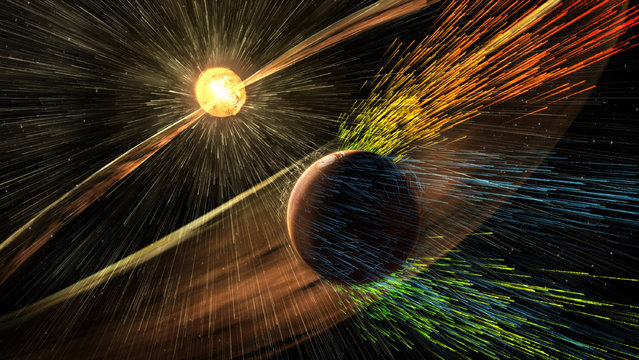
An artist's rendering depicts a solar storm hitting Mars and stripping ions from the planet's upper atmosphere. Scientists have documented a solar storm blasting away Mars' atmosphere, an important clue in a long-standing mystery of how a planet that was once like Earth turned into a cold, dry desert. In March, NASA's Mars-orbiting MAVEN spacecraft caught such a storm stripping away the planet's atmosphere. Image released November 5, 2015. (Photo by Reuters/NASA/Goddard Space Flight Center)
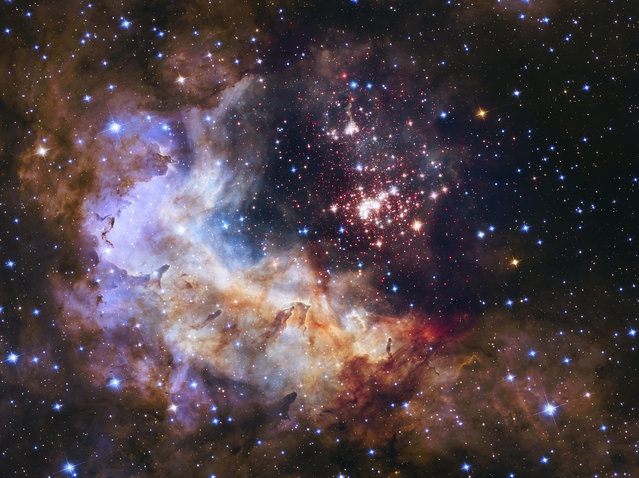
A stellar nursery of about 3,000 stars called Westerlund 2, located about 20,000 light-years from the planet earth in the constellation Carina. Image taken by the Hubble Space Telescope and released April 23, 2015. (Photo by Reuters/NASA)
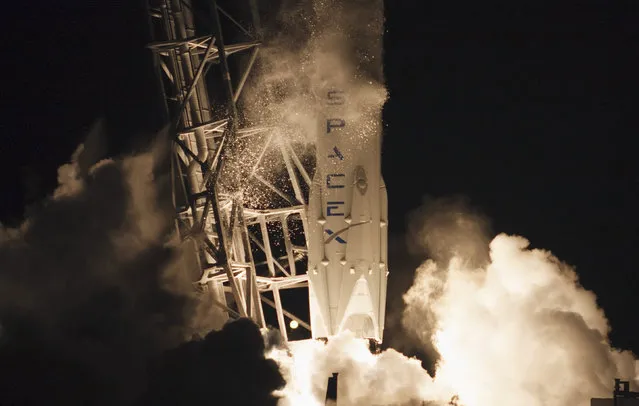
The unmanned Falcon 9 rocket launched by SpaceX on a cargo resupply service mission to the International Space Station, lifts off from the Cape Canaveral Air Force Station in Cape Canaveral, Florida, January 10, 2015. (Photo by Mike Brown/Reuters)
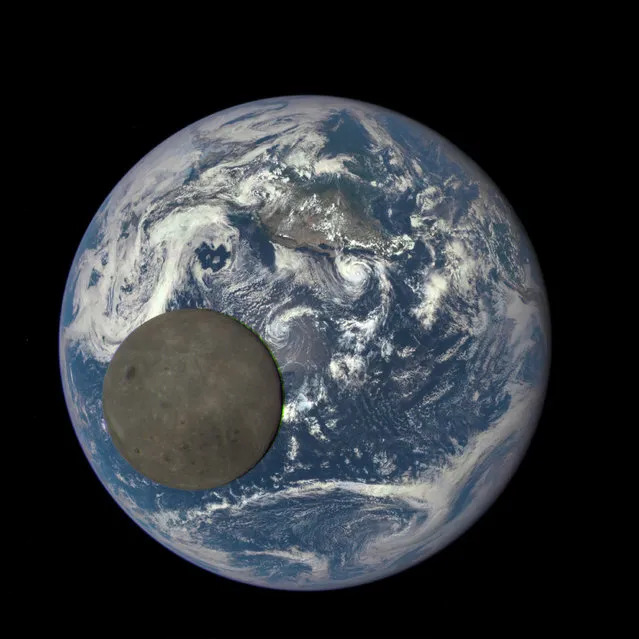
The far side of the moon, illuminated by the sun as it crosses between the DSCOVR spacecraft's Earth Polychromatic Imaging Camera (EPIC) camera and telescope, and the earth – one million miles away – July 16, 2015. (Photo by Reuters/NASA/NOAA)
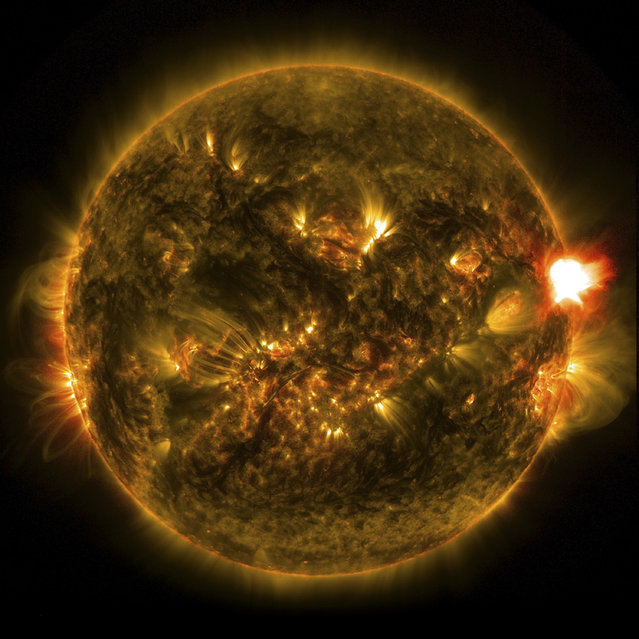
A mid-level solar flare is seen in an image from NASA's Solar Dynamics Observatory on January 12, 2015. Harmful radiation from a solar flare cannot pass through Earth's atmosphere to physically affect humans on the ground, however – when intense enough – they can disturb the atmosphere in the layer where GPS and communications signals travel, according to NASA. (Photo by Reuters/NASA/SDO)
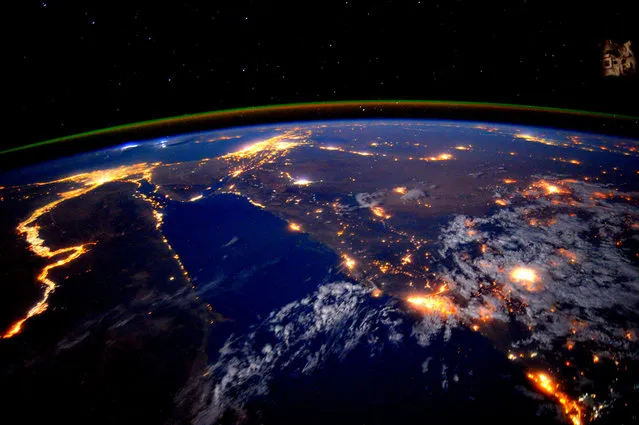
The Nile is seen at night during a flyover of the International Space Station taken by Astronaut Scott Kelly on September 22, 2015. (Photo by Reuters/NASA)
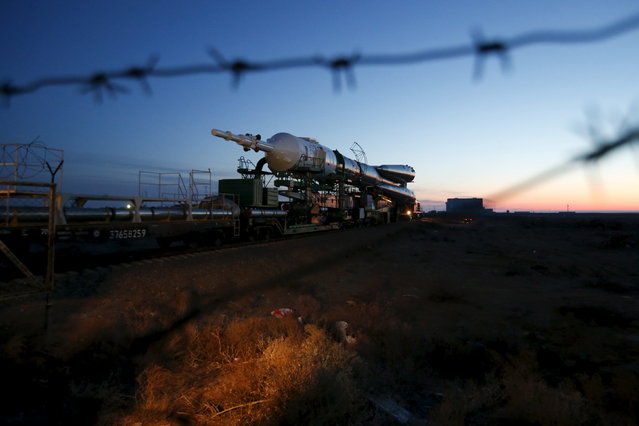
The Soyuz TMA-16M spacecraft is transported to its launch pad at the Baikonur cosmodrome, March 25, 2015. (Photo by Maxim Zmeyev/Reuters)
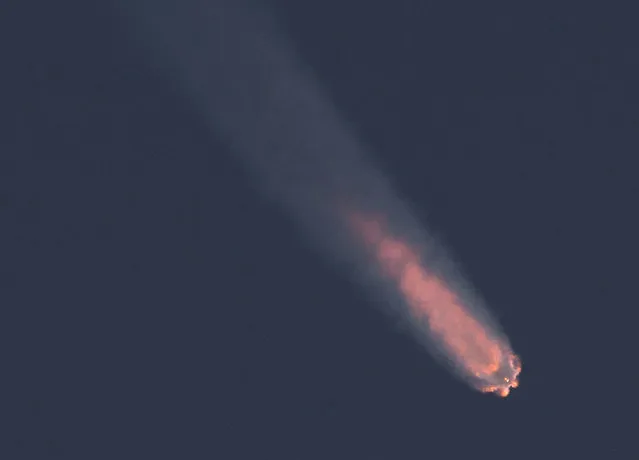
The unmanned Falcon 9 rocket, launched by SpaceX and carrying NOAA's Deep Space Climate Observatory Satellite, lifts off from launch pad 40 at the Cape Canaveral Air Force Station in Cape Canaveral, Florida, February 11, 2015. (Photo by Scott Audette/Reuters)
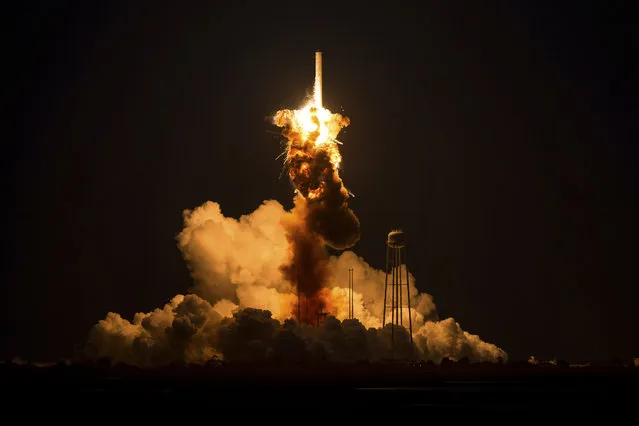
The Orbital Sciences Corporation Antares rocket, with the Cygnus spacecraft onboard, suffers a catastrophic anomaly moments after launch from the Mid-Atlantic Regional Spaceport Pad 0A, at NASA's Wallops Flight Facility in Virginia, October 28, 2014. The Cygnus spacecraft was filled with about 5,000 pounds of supplies slated for the International Space Station, including science experiments, experiment hardware, spare parts, and crew provisions. Image released November 4, 2015. (Photo by Joel Kowsky Reuters/NASA)
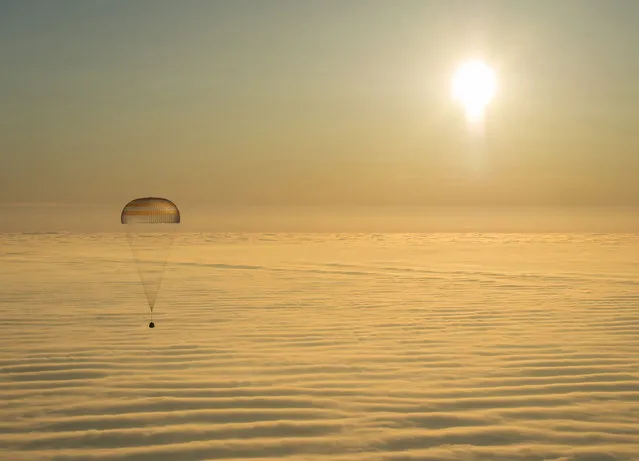
The Soyuz TMA-14M capsule with International Space Station crew members Barry Wilmore of the U.S., Alexander Samokutyaev and Elena Serova of Russia as it descends beneath a parachute just before landing in central Kazakhstan, March 12, 2015. (Photo by Bill Ingalls/Reuters/NASA)
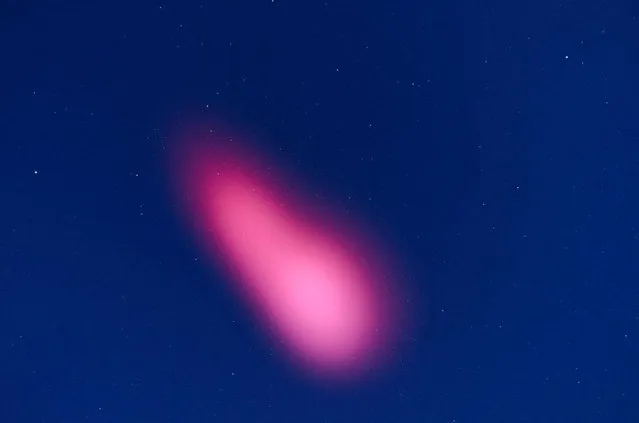
A pink astral cloud appeared in the sky of Tucson, Arizona, after a NASA rocket launch from White Sands, New Mexico, February 25, 2015. The unusual pink cloud was caused by a NASA research rocket launched to study the outer reaches of Earth's atmosphere, scientists said. (Photo by Reuters/White Sands Missile Range)
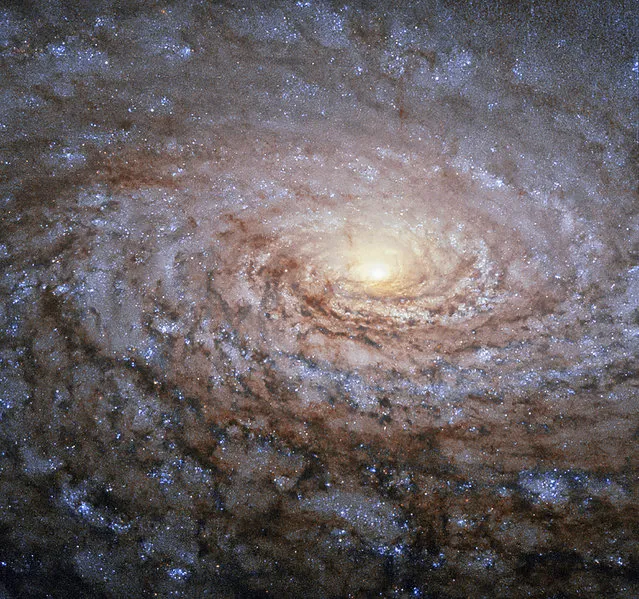
The galaxy Messier 63 – nicknamed the Sunflower Galaxy - in an image taken by the Hubble Space Telescope. Discovered by Pierre Mechain in 1779, the galaxy is about 27 million light-years away and belongs to the M51 Group. Image released September 11, 2015. (Photo by Reuters/NASA/ESA/Hubble)
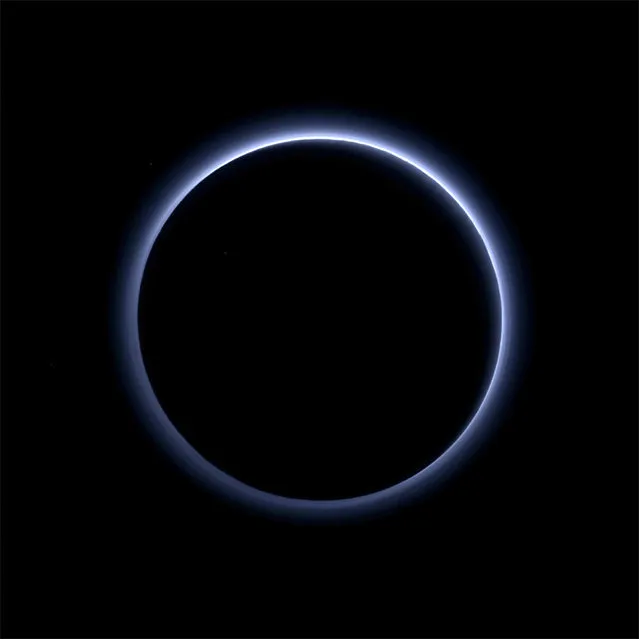
Pluto's haze layer shows its blue color in this picture taken by NASA's New Horizons Ralph/Multispectral Visible Imaging Camera released October 8, 2015. The high-altitude haze is thought to be similar in nature to that seen at Saturn's moon Titan. This image was generated by software that combines information from blue, red and near-infrared images to replicate the color a human eye would perceive as closely as possible. (Photo by Reuters/NASA/JHUAPL/SwRI)
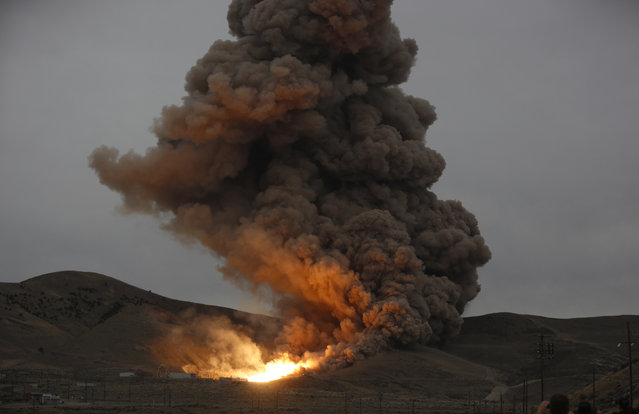
The SLS five-segment Solid Rocket Motor undergoes a static test fire at the Orbital ATK facility in Promontory, Utah, March 11, 2015. A beefed-up space shuttle solid rocket motor passed a two-minute test firing in Utah, a key milestone toward the debut flight of NASA's deep-space launcher in 2018, the U.S. space agency said. (Photo by Jim Urquhart/Reuters)

Researchers have found evidence that a white dwarf star may have ripped apart a planet as it came too close, as seen in this NASA Chandra X-ray Observatory image of a globular cluster designated as NGC 6388 released April 17, 2015. Using several telescopes, researchers have found evidence that a white dwarf star, the dense core of a star like the Sun that has run out of nuclear fuel may have ripped apart a planet as it came too close. (Photo by Reuters/NASA)
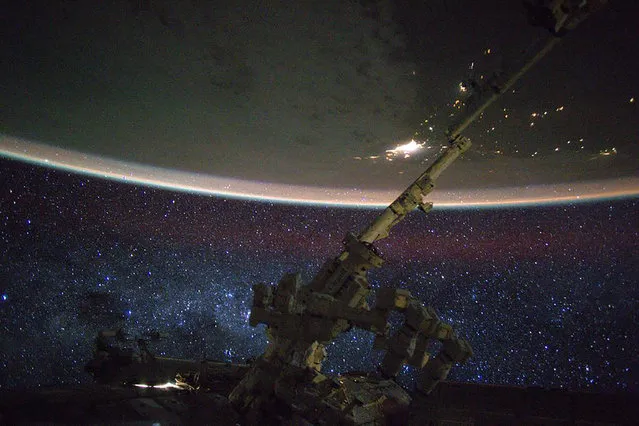
The lights of Perth, Australia, (top) and the stars in the Milky Way are seen in this picture by NASA astronaut Scott Kelly, taken from the International Space Station, August 20, 2015. (Photo by Scott Kelly/Reuters/NASA)

The unmanned Falcon 9 rocket launched by SpaceX, on a cargo resupply service mission to the International Space Station, lifts off from the Cape Canaveral Air Force Station in Cape Canaveral, Florida, January 10, 2015. (Photo by Scott Audette/Reuters)
10 Dec 2015 08:01:00,
post received
0 comments
